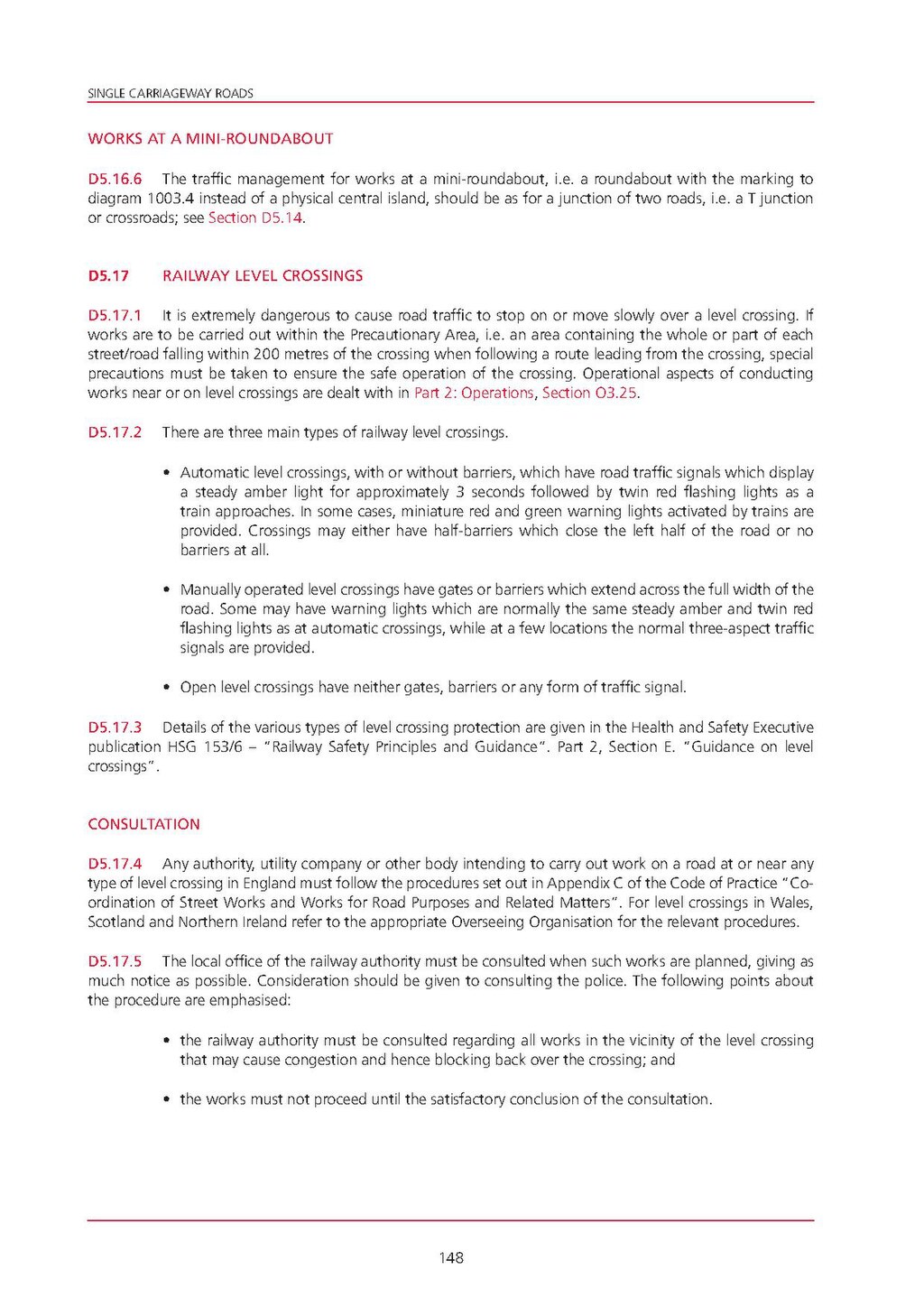WORKS AT A MINI-ROUNDABOUT
D5.16.6 The traffic management for works at a mini-roundabout, i.e. a roundabout with the marking to diagram 1003.4 instead of a physical central island, should be as for a junction of two roads, i.e. a T junction or crossroads; see Section D5.14.
RAILWAY LEVEL CROSSINGS
D5.17.1 It is extremely dangerous to cause road traffic to stop on or move slowly over a level crossing. If works are to be carried out within the Precautionary Area, i.e. an area containing the whole or part of each street/road falling within 200 metres of the crossing when following a route leading from the crossing, special precautions must be taken to ensure the safe operation of the crossing. Operational aspects of conducting works near or on level crossings are dealt with in Part2: Operations, Section O3.25.
D5.17.2 There are three main types of railway level crossings.
- Automatic level crossings, with or without barriers, which have road traffic signals which display a steady amber light for approximately 3 seconds followed by twin red flashing lights as a train approaches. In some cases, miniature red and green warning lights activated by trains are provided. Crossings may either have half-barriers which close the left half of the road or no barriers at all.
- Manually operated level crossings have gates or barriers which extend across the full width of the road. Some may have warning lights which are normally the same steady amber and twin red flashing lights as at automatic crossings, while at a few locations the normal three-aspect traffic signals are provided.
- Open level crossings have neither gates, barriers or any form of traffic signal.
D5.17.3 Details of the various types of level crossing protection are given in the Health and Safety Executive publication HSG 153/6 — "Railway Safety Principles and Guidance". Part 2, Section E. "Guidance on level crossings".
CONSULTATION
D5.17.4 Any authority, utility company or other body intending to carry out work on a road at or near any type of level crossing in England must follow the procedures set out in Appendix C of the Code of Practice "Coordination of Street Works and Works for Road Purposes and Related Matters". For level crossings in Wales, Scotland and Northern Ireland refer to the appropriate Overseeing Organisation for the relevant procedures.
D5.17.5 The local office of the railway authority must be consulted when such works are planned, giving as much notice as possible. Consideration should be given to consulting the police. The following points about the procedure are emphasised:
- the railway authority must be consulted regarding all works in the vicinity of the level crossing that may cause congestion and hence blocking back over the crossing; and
- the works must not proceed until the satisfactory conclusion of the consultation.
148
